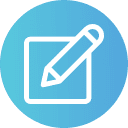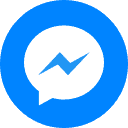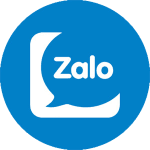📥Download App: https://pixelgamelvn.online/https-progamefreeno1-com-trang-chu-other-applications/
Pinterest: Visual Discovery, Content Ownership, and Hidden Lessons in Digital Insurance and Claims
Introduction
Pinterest is more than a digital mood board—it’s a powerful visual discovery engine used by creators, marketers, businesses, and everyday users to share, organize, and save ideas. From DIY crafts and home design to branding strategies and product launches, Pinterest plays a crucial role in shaping trends and influencing buying decisions. But with great content sharing comes risk, and Pinterest—whether users know it or not—mirrors real-world lessons in asset protection, intellectual property insurance, and claims logic in the digital age.
In this article, we’ll break down how Pinterest users unknowingly engage with core concepts of insurance, risk management, and digital loss prevention, and how businesses and creators alike can apply these insights to protect their visual content and brand identity.
What Is Pinterest and Why Does It Matter for Risk Awareness?
Pinterest allows users to:
-
Discover and pin visual content
-
Organize ideas into boards
-
Follow creators or brands
-
Generate traffic to external websites
Behind every pin is:
-
A visual asset
-
A link to a source (sometimes yours)
-
A potential brand impression
Losing control over these elements can lead to misattribution, reputation damage, or intellectual property misuse—all of which relate to insurance-style thinking in digital content management.
Pins Are Digital Assets—And Assets Can Be Stolen
Every pin you upload is:
-
A piece of content
-
A design or product photo
-
Part of your personal or business identity
If another user:
-
Downloads and reposts without credit
-
Links it to another product
-
Edits and reuses it commercially
…you experience digital content theft, much like:
-
Losing physical inventory
-
Having your brand copied
-
Experiencing unauthorized use of protected work
This mirrors the need for intellectual property insurance or digital rights management.
Account Hacking = Unauthorized Access to Insured Property
Losing access to your Pinterest account means:
-
Losing boards and pins
-
Risking reputation through unauthorized posts
-
Breaking links with followers and leads
This is the same as:
-
Losing the keys to a storefront
-
Having business emails hijacked
-
Facing claims from third parties for content misuse
Strong passwords, 2FA, and recovery options are like digital locks and risk controls—insurance for your access.
Broken Links and Expired Pages = Lost Business Claims
Pinterest thrives on external links. If:
-
Your website goes offline
-
Product pages are moved or deleted
-
Affiliate links expire
…you suffer:
-
Broken traffic
-
Lost monetization
-
Decreased visibility
This resembles:
-
Business interruption
-
Failed service delivery
-
Claim rejections due to outdated data
Marketers and e-commerce owners should monitor and maintain URLs—like renewing coverage on an active policy.
Viral Pins Without Attribution = Content Loss Without Compensation
One of Pinterest’s biggest risks is:
-
A pin goes viral
-
Gets repinned 1000s of times
-
But your credit or link gets lost
This is content monetization loss, similar to:
-
Creating a best-selling design and losing royalties
-
Not filing proper claims on copyrightable work
-
Being unable to track usage of your own assets
It reflects the need for:
-
Watermarking
-
Pinning from your own domains
-
Monitoring for unauthorized reuploads
Collaboration Boards = Shared Risk Environment
Pinterest supports collaborative boards:
-
Multiple users can pin to the same space
-
Teams can plan launches, branding, or creative mood boards
But shared access means:
-
Someone may delete key content
-
Upload off-brand or copyrighted material
-
Compromise reputation with poor-quality pins
This is like:
-
Shared liability insurance
-
Business partnerships without coverage agreements
-
Claims impacted by team member actions
Smart users:
-
Set contributor limits
-
Assign board-specific rules
-
Use approval flows for client work
Pinterest for Business = Brand Risk and Claim Responsibility
For businesses using Pinterest:
-
Every image reflects your product, tone, and strategy
-
Misuse or outdated pins can harm customer trust
-
Legal issues arise if you pin unlicensed content
Failing to manage this is like:
-
Operating without a liability policy
-
Neglecting brand protection measures
-
Publishing without editorial review
Pinterest content is public and lasting—post like it’s insured, because it represents real value.
Copyright and Reuse: Risk of Receiving or Causing Claims
Pinterest hosts a massive amount of user-uploaded content. Users who:
-
Pin stock images they don’t own
-
Use someone else’s artwork in marketing
-
Edit and redistribute original content
…may face copyright claims, DMCA takedowns, or platform restrictions.
This highlights the need for:
-
Licensing awareness
-
Creative Commons usage
-
Proactive disclaimers and permissions
In legal terms, it’s the equivalent of claim validation, negligence liability, and risk-based penalties.
![]()
Data Analytics = Loss Mitigation and Value Tracking
Pinterest provides:
-
Impression metrics
-
Click-through rates
-
Audience insights
These help creators and businesses:
-
Spot declining pins (loss of visibility)
-
Identify high-value content
-
Decide what to boost or recreate
It’s a form of loss assessment and insurance auditing:
-
Which content is most valuable?
-
What needs reinforcement?
-
Where are you exposed to risk?
Regular review of analytics is like checking policy strength.
What If Pinterest Had a Content Insurance Feature?
Imagine Pinterest offered a premium protection plan:
-
Content Tracking and Watermarking
-
AI detects unauthorized reuploads
-
Original owner is credited or alerted
-
-
Backup Vault
-
Save all uploads in high-res cloud storage
-
Restore deleted boards or links
-
-
DMCA & Copyright Enforcement Dashboard
-
Centralized panel to file and manage takedown requests
-
Partnered legal response for business users
-
These features would simulate:
-
Digital asset insurance
-
Claim filing systems
-
Risk-managed content publishing
Best Practices: Self-Insuring on Pinterest
Until Pinterest builds such a system, smart users and brands can self-insure by:
✅ Always uploading from original sources
✅ Watermarking creative content
✅ Keeping offline backups of pin visuals
✅ Using descriptive text and meta tags
✅ Monitoring viral pins for source credit
✅ Refreshing old pins with active links
✅ Avoiding unlicensed content for commercial use
This builds a self-protective ecosystem—the equivalent of insurance for creators.
Conclusion
Pinterest isn’t just a tool for saving ideas—it’s a living library of personal and professional assets. But with every pin comes the risk of loss, misuse, or missed value. Whether you’re a business, designer, or casual creator, applying insurance-like logic—through backups, credit protection, copyright awareness, and brand monitoring—is essential in today’s visual web. Your pins represent more than ideas—they represent ownership, reach, and value. Treat them with care, because digital loss has real-world consequences.
📍Download Android: https://play.google.com/store/apps/details?id=com.pinterest
📍Download IOS: https://apps.apple.com/us/app/pinterest/id429047995




